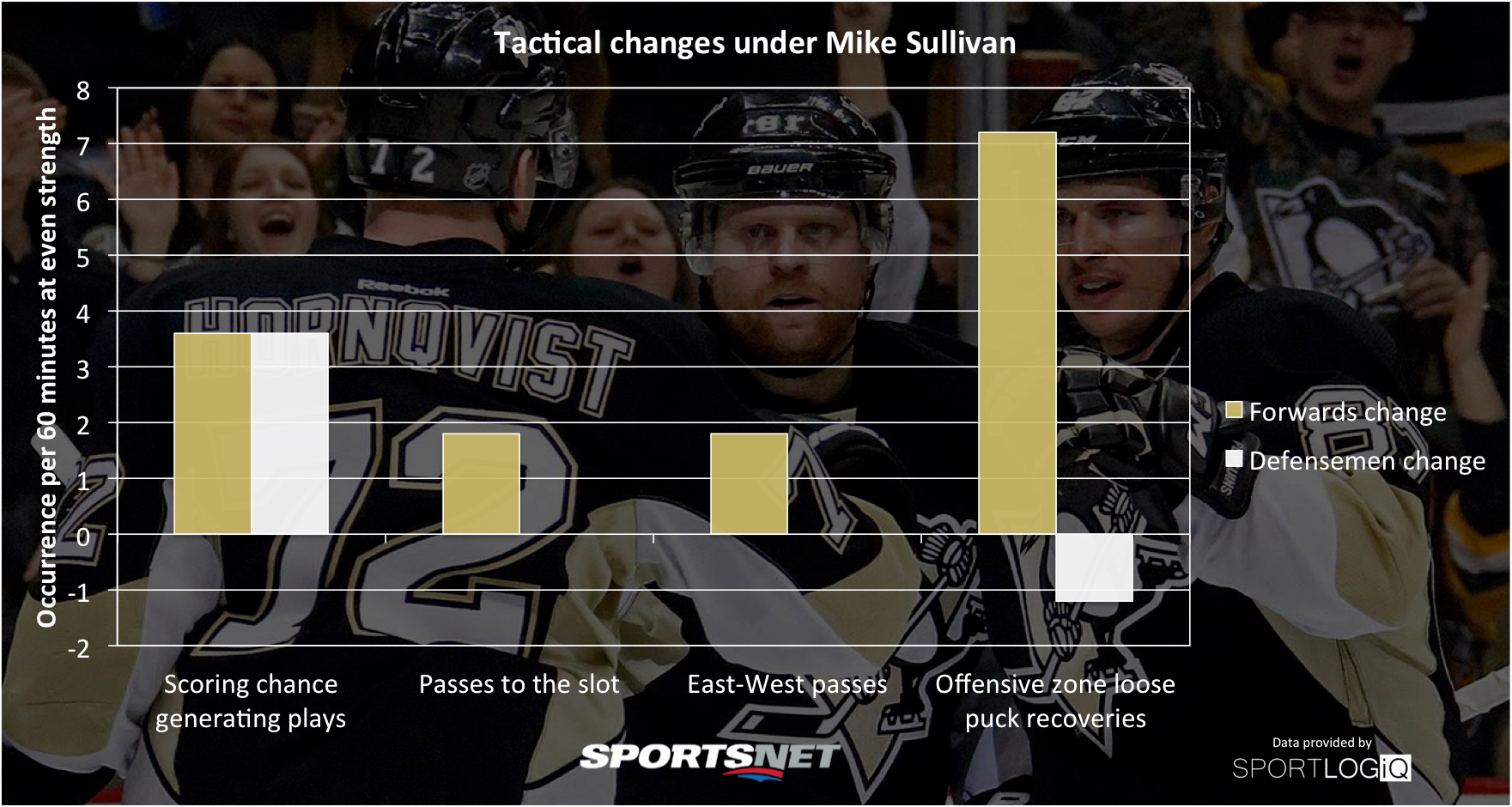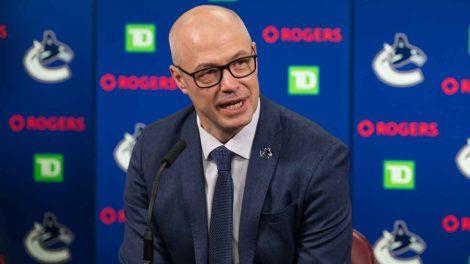The resurgence of Sidney Crosby has dominated the headlines surrounding the Pittsburgh Penguins this season. Croaby’s slow start – the slowest of his career – was undoubtedly a big factor in the firing of Mike Johnston as head coach on December 12.
Since the coaching change that brought in Mike Sullivan, Crosby has been on fire, and the team as a whole has risen from 20th in the NHL in score-adjusted Corsi at just 48.3 per cent, to second in the league since December 12 at 54.8 per cent, with only the powerhouse Los Angeles Kings ahead of them.
It took a while for the Penguins’ record to look as impressive as their domination on the shot clock, but even with Evgeni Malkin out with an injury, Pittsburgh has been impressive.
Part of the reason for this improvement is the upgrades they’ve made on defence. Specifically, swapping the shot-blocking Rob Scuderi out for mobile puck-mover Trevor Daley made a big difference, but surprisingly the bigger difference has been among the forwards.
The biggest changes the Penguins have seen are in the offensive zone, with the forwards executing a much more effective forecheck, which wins them just over seven extra loose pucks per 60 minutes at even strength. Those extra won battles have allowed the Penguins to put more pucks on the net from all areas, but most significantly, from the slot. In fact, both their forwards and defence have been creating more than three extra scoring chances per 60 minutes at even strength.
Perhaps most importantly for the Penguins’ ability to score, that proficiency in forechecking has led to the forwards making more successful passes down low, both to the slot and East-West in general. This has lead to more pre-shot movement, and better chances to score.
The other big change from Johnston to Sullivan has been execution of plays with the puck, specifically in terms of getting the puck out of the defensive zone, and not turning it over. In this instance, the lower the percentage, the better.
The changes are minor, but over time they add up. Both the defence and the forwards are choosing to dump the puck out of the defensive zone less under Sullivan than they were under Johnston. While that can be a more difficult strategy for a defensive group no one would argue is among the league’s best, the net effect is positive even with a slight rise in defensive zone turnovers from defencemen.
The forwards, meanwhile, have been turning the puck over less in each zone. Again the changes are mild, but it seems as though Sullivan’s systems fit the lineup better, which allows the players to execute at a higher rate.
Almost all of the changes in microstats regarding the Penguins are very small, but the improvements are also widespread. No single area is worth pointing to as the secret to their success, but it’s undeniable that Mike Sullivan has had a seriously positive impact on this group.
By tailoring his system to maximize the talent the Penguins have in the lineup, getting the best out of every player that he can, Sullivan has shown the value a mid-season coaching change can have, provided you do it for the right reasons, and get the right person for the job.









